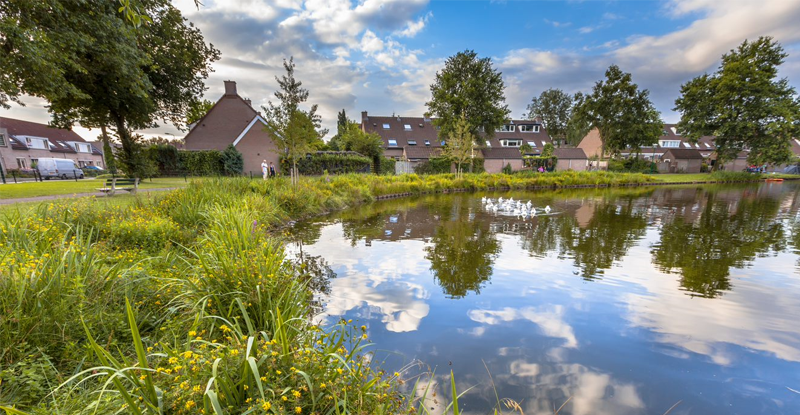CSA Group publishes national standard for natural asset inventories

There has been an increasing recognition of the value that natural assets play. Thanks to standards-setting organization CSA Group, those natural assets now have a set value. That standardization will assist municipalities across the country in better managing their futures.
Natural assets – grasslands, forests, and wetlands, to name a few – contribute to the delivery of ecosystem services. This includes many essential public services, ranging from the provision of clean water, flood management, improved air quality, and increased biodiversity. Unlike engineered assets, these natural assets are often excluded from asset management plans and financial reports. This exclusion often leads to the mismanagement of these assets and the deterioration of the services that they provide.
New National Standard is Set
To address this need, CSA Group has published CSA W218:23: Specifications for natural asset inventories. The CSA Group develops standards in 57 areas. The organization publishes standards in print and electronic form and provides training and advisory services.
Michael Leering, CSA Group’s Director, Environment and Business Excellence, said establishment of these standards begins the conversation around demystifying what natural assets are. These standards, Leering said, are the first step toward active asset management of natural assets.
“Historically, asset management is focused on buildings, and infrastructure, and the grey of the world,” Leering said. “This new, national standard is the first step in actively managing natural assets. This national standard sets that consistent, repeatable way of completing an inventory of what natural assets exist in a community.”
The hope, Leering said, is that once this carries across Canada, communities will start to identify their natural assets. Municipalities can then collaborate on improvements to these natural assets. They will also be better able to seek out funding to support future enhancements.
The new standard defines minimum requirements for the development and reporting of a natural asset inventory. It provides definitions, guidance, and helps bridge the gap for local governments looking to begin accounting for their natural assets. It also provides consultants and practitioners with expert-developed best practices to apply in their work.
This standard will help ensure that natural asset inventories, the first step in the natural asset management process, are comparable, consistent, and replicable across Canada.
“What we really want to have happen here is linking the natural assets in the community to the services that those natural assets are providing,” Leering said. “Whether that’s flood mitigations, or heat islands, or biodiversity, there’s many different factors that this standard is able to do. It starts with completing an inventory of what exists.”
Benefits of a Natural Asset Inventory
CSA W218:23 was developed by the Technical Committee on Natural Asset Inventories. The committee was composed of representatives from key interest groups, including academia, municipal staff, regulators, industry representatives, consultants, and users, among others.
The technical committee was led by Chair Steve Wyton, Manager Asset Management Planning, City of Calgary, and Michelle Molnar, Technical Director, Municipal Natural Assets Initiative. The project was undertaken with the financial support of the Department of Environment and Climate Change Canada.
“This project focused on the establishment of a natural asset inventory and is a key move toward the recognition, management, and protection of our natural assets,” Wyton said. “Determining the value of natural assets focuses on elements including forests, soil and water bodies, and linking the eco-service value that they provide in areas like water treatment, flood control, carbon capture, and many other critical services that municipalities provide while also aligning with key strategies like resilience and climate change mitigation.”
Move Toward the Green
It wasn’t that long ago that CSA was helping municipalities understand the need for asset management on their grey infrastructure. But today, Leering said he sees more local governments transitioning to a greener and more recognized approach to green infrastructure.
Leering has been with CSA for 15 years and is well-versed in the environment business and natural resources space. He said he is excited to see a greater recognition of the value of natural assets.
What are natural assets? How do we manage them? What do they look like? These are all questions Leering said are being more commonly asked. There is a much greater appreciation and recognition of these natural assets in our communities, he said. It is a natural next step for there to be an integration into active asset management.
“We’re already actively managing our assets in communities,” Leering said. “Whether that’s wastewater treatment plants, or landfills, or all the rest. We have the consistent upgrades and improvements that are needed with the grey infrastructure.
“But we’re recognizing and realizing that enhancements to even green infrastructure can add in further benefits and enhance the benefits that these natural environments are providing. I really think that that’s growing in understanding.”
At the Tipping Point
Leering said he feels like the conversation around natural assets is “at the tipping point.” There is no longer an ignorance around the value of green assets. Instead, he continues to witness “the flavour of natural assets” being integrated into environmental conferences and publications. The conversations, he said, are out there.
Leering is confident the standard will help catalyze that tipping point. People, he explains, are recognizing this is not a conversation around “a pretty forest that’s aesthetically pleasing.” Instead, natural assets increase biodiversity, support endangered species, and allow for recreation and carbon sequestration.
“We can’t compound all the values that these potentially benign forests are holding. I think that it’s resonating,” Leering said. “I think it’ll be catalyzed through this national standard of a consistent way of categorizing them to begin with. And then we know what we’re talking about.”
Changing Climate, Timely Standard
Climate change is putting natural assets under threat. Leering said this reality means having a national standard is more important now than ever before.
Leering said the publishing of the new standard is “absolutely extremely timely.”
There are all these intrinsic ecosystem services that natural assets provide. With extreme rainfall events, for example, natural assets like rivers can help take that water away.
Leering also points to the opposite extreme, such as heat islands or drought events. When faced with the potential impact of these extreme events, assets such as forests and tree canopies can help mitigate the impacts. At the same time, the same asset will also deal with increased storm floods and rainfall events.
Leering said he is confident release of the new standard is timely because of the changing climates we’re in.
“The weather patterns are more irate, they’re changing constantly, and these assets have the ability of supporting kind of both folds of our climate challenges,” Leering said. “That’s where it’s even increasingly more timely to try and get these into the active asset management categorization. That way we can not only know that they exist, but then hopefully improve, protect, and enhance and grow the assets. That’s why I really think we are a tipping point on this.” MW
✯ Municipal World Executive and Essentials Plus Members: You might also be interested in Roy Brooke’s article: Building liveable, climate-resilient communities.
Sean Meyer is Senior Editor for Municipal World.
Related resource materials:


